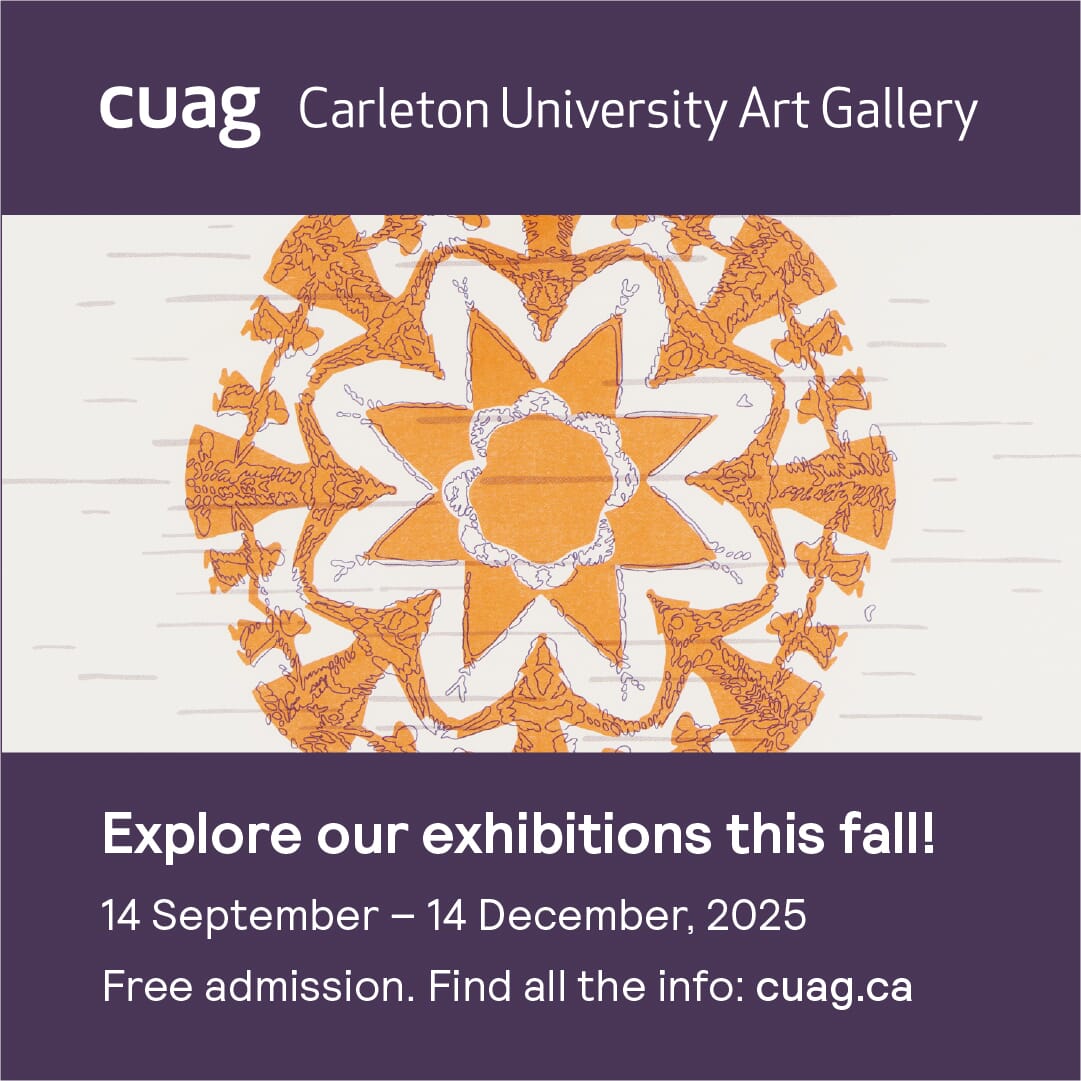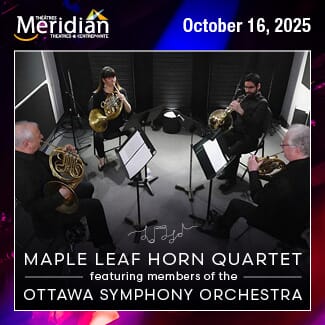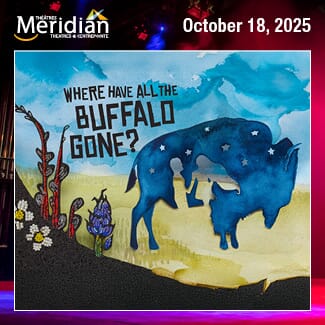Makers are known for expressing the nature of their communities and providing resources for them. But what happens when they’re uninvited to the conversation or the markets where their peers make a living? Some stories undeniably risk being forgotten. However, many expose relationships: acting as links in a chain, connecting their subjects to their environments. Over a century ago, Canada was in the thrall of the Group of Seven’s rustic landscapes. Those famous scenes were painted by men, while many women in modern art had other subjects in view.
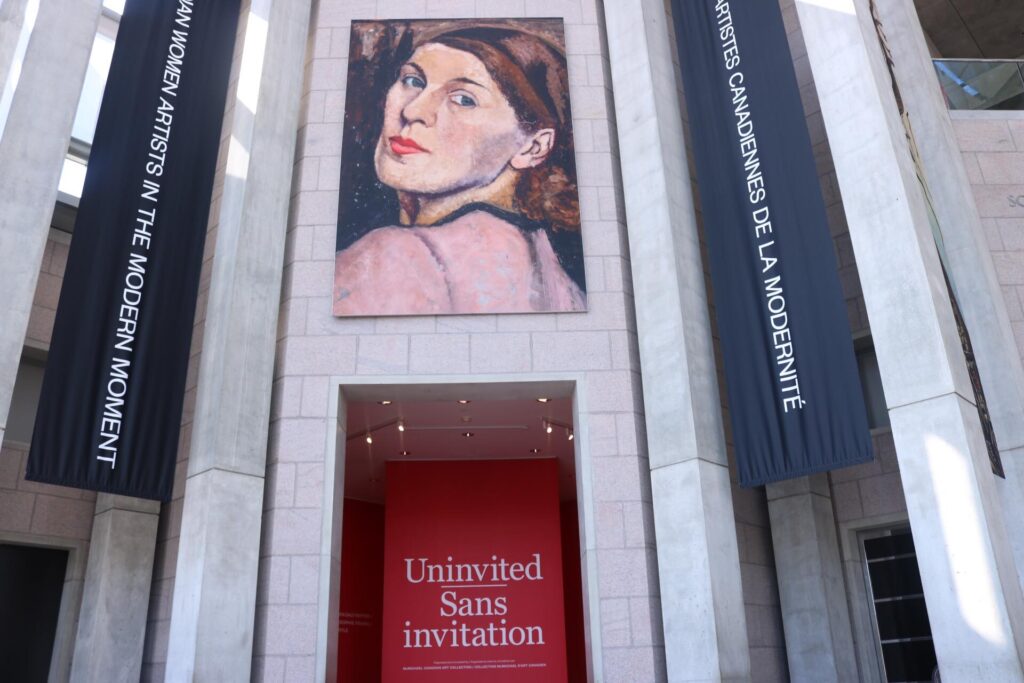
Uninvited: Canadian Women Artists in the Modern Moment exhibition. Photo: Sarah Crookall.
Uninvited: Canadian Women Artists in the Modern Moment is a collection of nearly 200 works of art, including paintings, photography, beadwork, and sculpture. It honours the cross-country creations of women during the interwar period over 100 years ago. Some of those artists include Prudence Heward, Emily Carr, and Bess Larkin Housser Harris (who was Group of Seven member Lawren Harris’ wife). Although their voices were less prominent than those of their male counterparts, they spoke to the great realities of their communities, labour, and politics.

View from the NGC’s Uninvited exhibition. Photo: Sarah Crookall.
Walking into Uninvited, I had an overwhelming feeling of having stepped into the quiet rooms inhabited by women from another era. Whether these women were at home or enjoying public entertainment for the first time without male company, they were viewed with care by the artists. Many faces in the portraits on display reveal complex emotions. For example, the girl in “Portrait of a Seated Young Lady” by Heward slumps over a table in a delicate silver dress. Her hand supports her head as she stares up and away from the viewer. In another exhibit room, Frances Loring explores mourning after the First World War with a downcast dark bronze sculpture titled “Grief.”
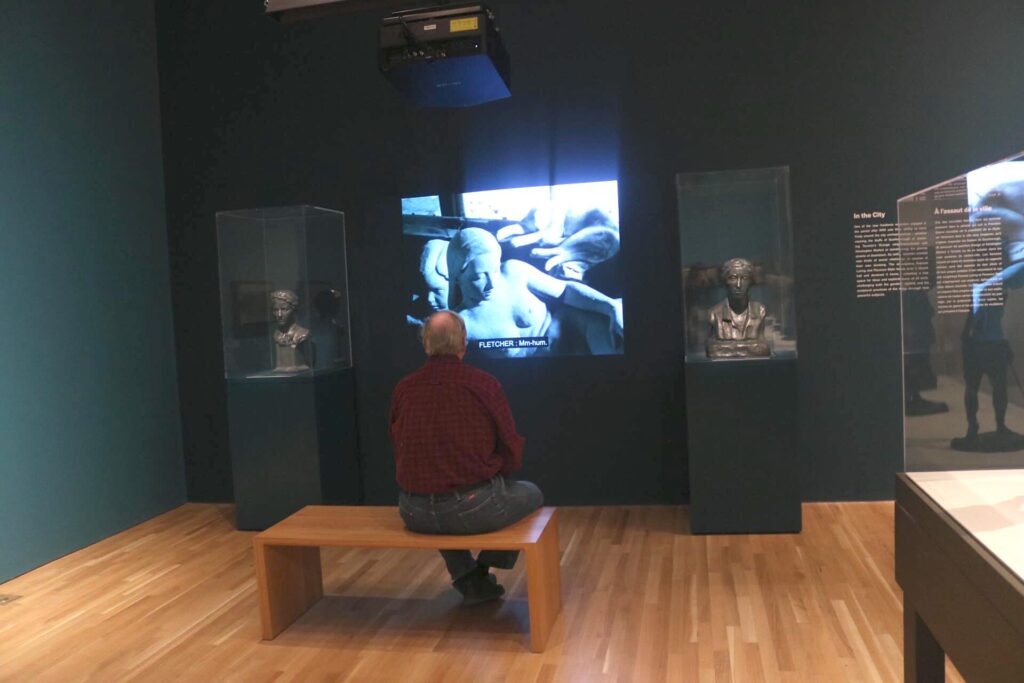
A visitor to Uninvited watches a film reel. Photo: Sarah Crookall.
The artists also depict more personal aspects of their lives, exemplified in Suzanne Duquqeut’s “Group.” Duquet paints herself scowling in front of her easel next to her three prim sisters in a domestic room. On the theme of work, there are woven baskets on display, made by Black and Mik’maq artists whose names we no longer know, that were once sold outside of markets in Halifax. Regarding the environment, Carr shows a landscape devastated by logging, calling the ravaged tree stumps “screamers.” In viewing these works, I become aware of how these artists intimately connect to people and places. One fellow gallery-goer said she didn’t think male artists would have “painted things the same way.”
At the same time, I got pulled into the internal landscapes of imagination through colour. For example, Pegi Nicol MacLeod’s yellows in “A Descent of Lilies” spill over from lily flowers and merge with human figures and dreamy clouds. Meanwhile, a landscape painting by Harris looks like a typical composition from her husband, except she opts for bright hues that almost glow, offering her unique perspective. Other artists explored fancy through technique. Carr, for example, created ethereal-looking skies by mixing paint with gasoline.
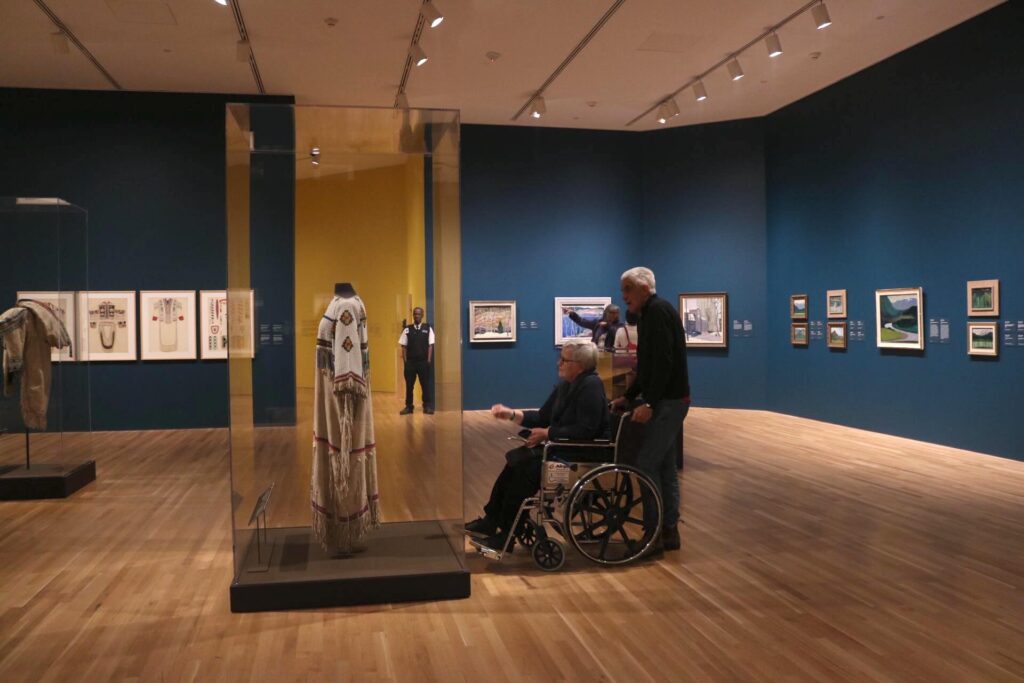
Patrons view a hide dress in The Ancestors’ Gallery. Photo: Sarah Crookall.
Uninvited is in conversation with The Ancestors’ Gallery, an Indigenous collection put on by NGC’s Indigenous Ways and Decolonization Department, from which works appear throughout the exhibition. These Indigenous voices were left out during their time because of the restrictions imposed under the Indian Act. These once-known artists created intricate details on traditional dresses and weaving for cedar baskets. But most strikingly, The Ancestors’ Gallery made me aware of the co-creation between a community of makers since many of the works were made by multiple artists.
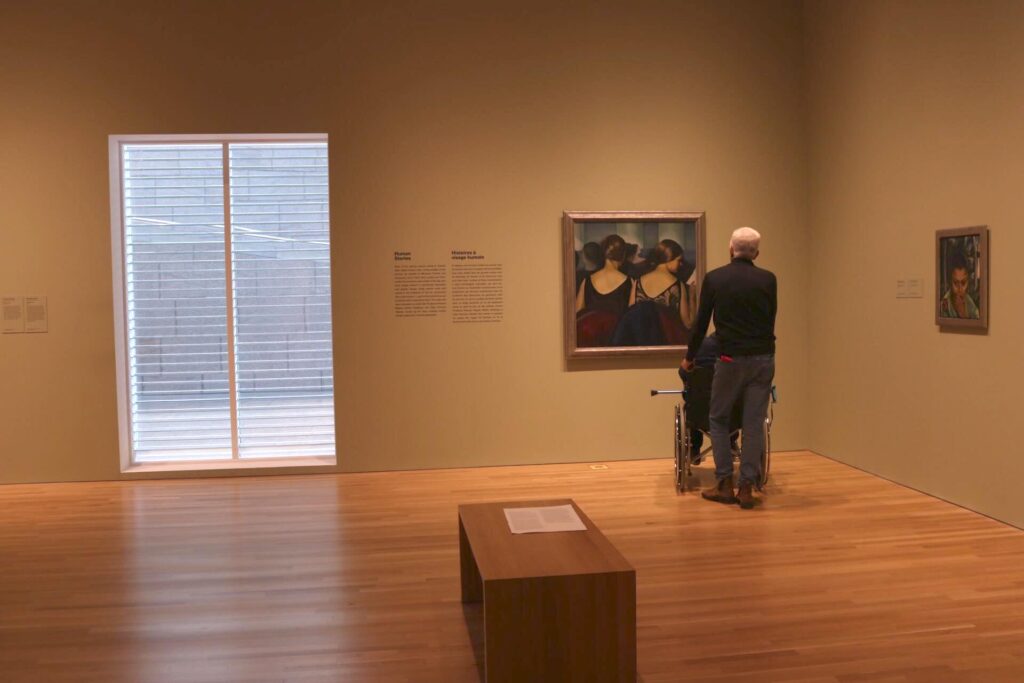
Patrons view Prudence Heward’s “At the Theatre”. Photo: Sarah Crookall.
Settler artists were also involved in the exchange of culture. Kathleen Day showed a Nakoda boy wearing a cowboy hat at a ranch. Emily Coonan showed a settler girl wearing a kimono. And a few other artists drew portraits of their peers, voicing each others’ stories. In this way, these women artists reveal a complex dimension of communities and how their subjects interact with their world, communicating a vital exchange of forms.
Uninvited: Canadian Women Artists in the Modern Moment is on exhibition at the National Gallery of Canada until August 20, 2023. All galleries at the NGC are wheelchair-accessible, and mobility devices are available to rent. Tours are also adapted for visitors with disabilities. More information about the NGC’s accessibility options is available online.






